The content of the article
Juniperus (Juniperus Sabina) is a concentrate obtained by distillation from an evergreen shrub, commonly referred to as juniper or veres. This plant has proven itself to be a very wide range of possibilities and unique properties.
Historical facts
Even in the manuscripts of the ancient Egyptians and Romans, the healing properties of the plant were noted. The use of the works in Avicenna's works is described in detail and in accessible form. The same wood was used for the manufacture of dishes, prolonging the storage of milk. Furniture was made from it. Application was found in magic and rituals. In Russia, juniper berries were brought from all regions to Moscow, since there was such a thing as “berry duty”. Already in the 17th century, life-giving alcohol and juniper oil were prepared from them.Legends and myths have been composed of coniferous shrubs. One of the legends says about the incredible beauty of the girl Veresukha, who lived under the branches of the juniper, apparently from ancient times positive effects of veres on the skin of the face and its cosmetic properties were noticed.
Juniper oil is a panacea for many diseases. It was not for nothing that during the Soviet era parks and squares, recreation areas and sanatorium-resort areas were planted with this plant. Valuable concentrate found its niche in the cosmetic products for the care of the dermis. To understand how it affects the state of the skin tissue, and what components contribute to this, a list of components was studied.
Components of ether
- Turpineol.
- Kadinen.
- Terpenes.
- Camfen.
- Pinen.
- Borneol.
- Coloring tannins.
- Sahara.
- Organic acids (malic, formic, acetic).
- Trace elements (iron, manganese, copper, aluminum).
- Vitamin C.
- Saponins.
- Limonen.
- Bornyl-, linalyl acetates.
Cosmetic properties that affect the appearance of the skin
- Tonic Improves skin turgor.
- Cleansing. Heals the skin with dermatitis, various types of rash. Cleans pores.
- Soothing.Relieves irritation and swelling.
- Regenerating. Restores and promotes cell growth.
- Modeling. Aligns the relief of the face.
- Rejuvenating Smoothes wrinkles.
- Moisturizing. It nourishes the skin, nourishes with beneficial substances.
- Whitening Improves skin complexion, cleans.
- Normalizing the production of fat from the sebaceous glands. Eliminates oily shine, tightens pores.
- Healing It contributes to the resorption of scars and post-burn wounds.
- Accelerating blood circulation processes. Provides nutrition to skin cells, enriches it with oxygen.
- Antioxidant. Removes toxins and free radicals.
- Anti-inflammatory.
- Antiseptic.
- Astringent
Preventive. Slows down the destructive processes in the skin, leading to aging. Starting care at a young age on the means of oil, you can significantly push this unpleasant moment.
To improve the condition of the skin, juniper oil is recommended to use in a complex. After all, internal health also has an effect on the color and elasticity of the dermis of the face.
External and internal use
- To remove slagging, remove toxic compounds and eliminate intestinal congestion,It is recommended several times a month, instead of the morning and lunch meal, drink the mixture prepared according to the following recipe. Juniper oil (3 drops), honey (half a teaspoon), mix and use, washed down with water, acidified with lemon juice. Dinner should be light.
- By the express method, you can prepare a face cream by mixing the usual, used every day industrial, and better children's cream (one serving), with oil (2 drops). Apply the usual method on the skin for nutrition, moisturizing and toning effect.
- Mask from oily shine (for oily skin). To prepare the protein from one egg, beat with a whisk to soft peaks, inject juniper oil (3 drops), mix and distribute on the skin of the face, excluding the area around the eyes. For a period of 15 minutes, the derma will calm down, acquire a uniform tone, redness will be eliminated, pores will be cleaned, the process of treatment of various types of rash will start. Perceptibly positive impact on the sebaceous glands, oily shine will disappear.
- A mixture of oils for the treatment of problem skin. The cumin black concentrate is heated to a slightly warm state and mixed with juniper ether (4 drops).Lubricate problem areas, places of aggressive rash. Treatment is carried out twice a day, until complete healing of the skin of the face.
- Tonic universal (for any type of skin). Mineral water without gases (1 cup) is improved with juniper oil (5 drops). Used for wiping the skin in the morning and before bedtime. This solution has a good invigorating property, reduces pores, gives the skin elasticity and freshness. Tones up.
- Cosmetic ice. Honey (1 tbsp. Spoon), diluted in non-carbonated water (200 g), improve by means of oil of heather (5 drops). It invigorates, tones, gives turgor to the skin.
The oil extracted from the components of the juniper plant is universal and applicable to all skin types. Its value is due to the rich composition and 100% natural. If you compare it with luxury, expensive cosmetics for face care, it definitely wins, because it does not include synthetic additives and chemical fragrances. Its action is completely aimed at preventing and solving problems related to skin health.
Cases where this oil is not recommended for use
Contraindications for external use not identified, except for individual intolerance. It is also recommended to do a skin test for an allergic reaction.
Take inside is not recommended for pregnant women and mothers during breastfeeding. When inflammation of the kidneys is a need to find another tool, it is also not advisable to use hypertensive patients.
Video: juniper essential oil


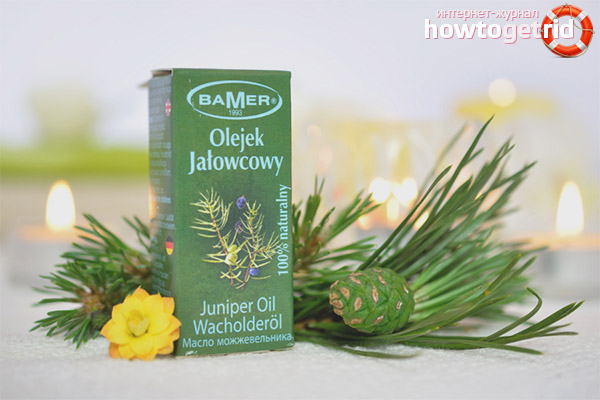


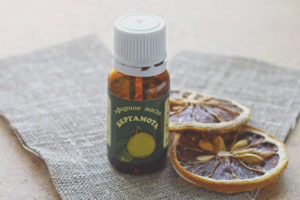
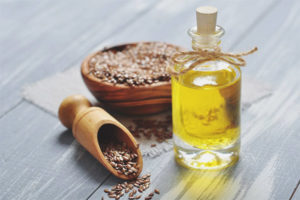


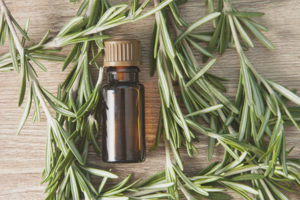
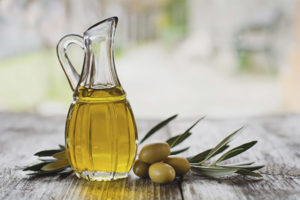
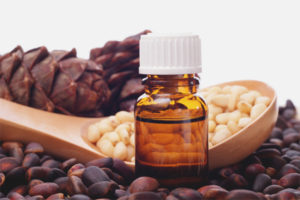
To send